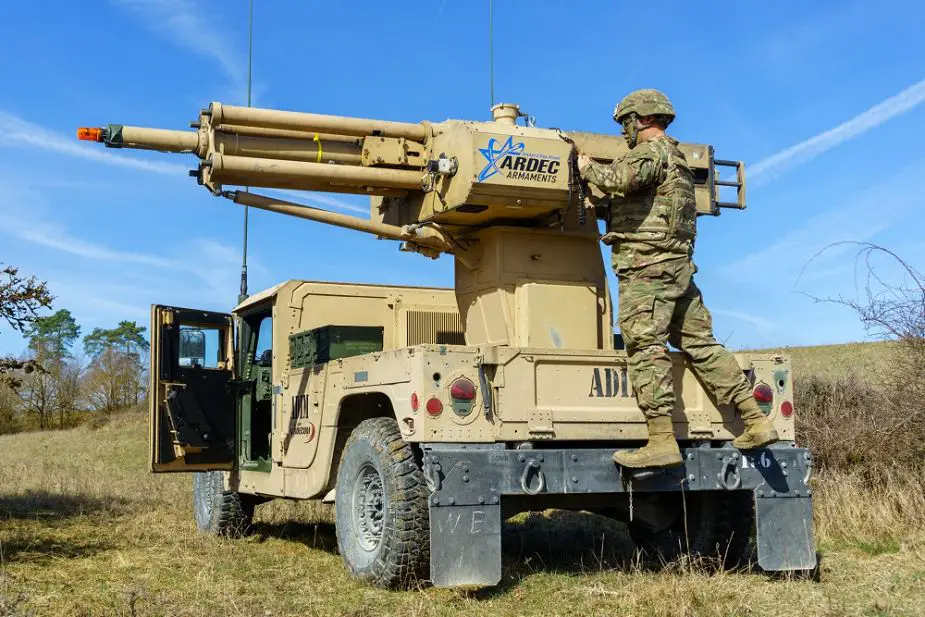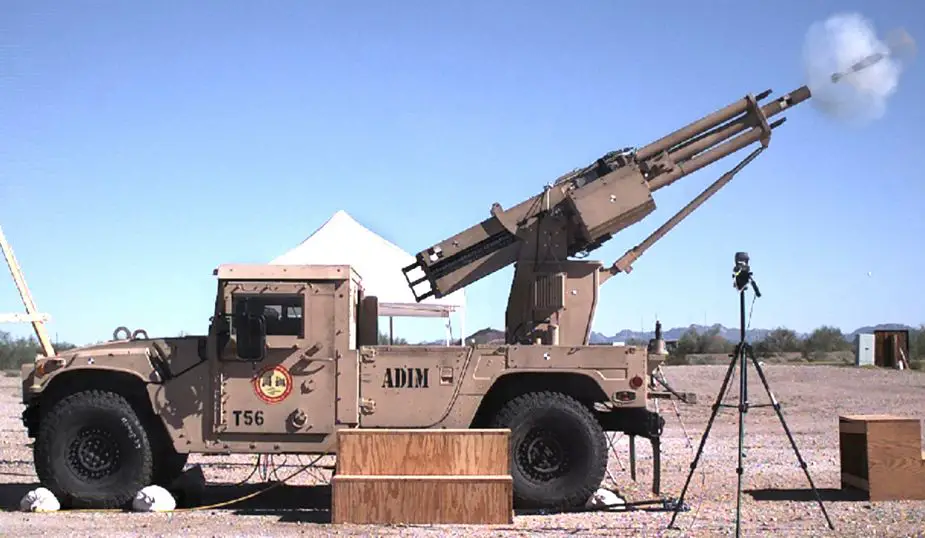US Army soldiers have demonstrated Automated Direct Indirect Mortar ADIM
In April 2016, U.S. Army Soldiers assigned to the 2nd Armored Brigade Combat Team, 1st Infantry Division have demonstrated the automated mortar system Automated Direct/Indirect Mortar (ADIM) mounted on HUMVEE tactical vehicle during a multinational joint equipment training exercise with the U.S. military at Grafenwoehr Training Area, Germany, as part of a Robotic Complex Breach Concept demonstration.

A U.S. Soldier assigned to the 2nd Armored Brigade Combat Team, 1st Infantry Division, simulates loading a vehicle mounted Automated Direct/Indirect Mortar (ADIM) during a Robotic Complex Breach Concept assessment and demonstration, at Grafenwoehr, Germany, April 6, 2018. (Picture source US Army)
The ADIM, currently an 81mm mortar weapon system, uses "soft recoil" to reduce the firing loads transmitted to the platform by a factor of eight, well within the limits of the HMMWV (or other light tactical vehicles) capacity. This enables mounted firing and supports rapid mobile operations.
An associated benefit of the soft recoil system is the ability to fire the weapon (direct) at low quadrant elevations (QE) as well as (indirect) at high QE to either compensate for terrain interferences or take advantage of the reduced time of flight associated with low QE firing solutions.
ADIM functions are automated so that operations normally conducted manually by the Soldier can instead be executed via electro-mechanical actuators controlled by the weapon Actuator Control System (ACS), which was also developed by Picatinny engineers and is a government owned technology.
ACS operation is directed by the Automated Fire Control System -- Mortar (AFCS-M) which is an enhanced version of the fielded M95 Mortar Fire Control System (MFCS).

The ADIM, currently an 81mm mortar weapon system, uses "soft recoil" to reduce the firing loads transmitted to the platform by a factor of eight, well within the limits of the HMMWV (or other light tactical vehicles) capacity. (Source picture U.S. Army)
The AFCS-M provides the human interface for controlling the loading/unloading, emplacing, aiming and firing of the ADIM.
A key capability associated with the AFCS-M is the incorporation of an inertial navigation unit and GPS receiver, which enable full-time emplacement of the ADIM and thus eliminate the long setup and reset times of several minutes associated with traditional surveying and aiming stake methods.
The ACS and AFCS-M combination enables rapid execution of mobile "shoot and scoot" operations to reduce Soldier exposure to enemy fire and susceptibility to counter-fire. AFCS-M also provides the ability to operate the ADIM via remote control as an unmanned weapon system operated by Soldiers in a protected (Fire Direction Center) location. An ideal application for this is Forward Operating Base (FOB) protection.
Although the ADIM can be fired remotely, it is designed to require a Soldier to identify the target and make the decision to fire as prescribed in DoD Directive 3000.09 Autonomy in Weapon Systems. ADIM automation and Fire Control reduces the Soldier burden while increasing survivability.


























